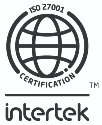Empowering Insurance Innovation: Embracing Co-Existence

For many large insurers, introducing new products to the market can be a daunting task, fraught with system complexities, mounting costs and lengthy timelines.
However, as one of INSTANDA’s Sales Managers, Ian Gibbard, explores in this blog, the concept of co-existence—integrating new technology with existing systems— can provide a path for the development of agile, innovative, and customer-centric solutions.
Common Challenges with Enterprise Systems
Time-Consuming Product Launches
As we explored in our latest Guide on ‘Navigating Innovation in Complex Insurance Landscapes’, launching a new insurance product in a large-scale enterprise environment is a resource-intensive endeavor. Existing systems often rely on outdated programming languages and hardware that are no longer supported or are difficult to maintain. This makes it challenging to quickly implement new features or integrate modern technologies. The result is a slower development process, as teams must work around technology limitations or spend time updating the system to accommodate new product requirements. Slower development leads to lengthier, more arduous and often much more costly product launches.
Data is also siloed, making it difficult to aggregate and analyze data efficiently for new product development.
Integration Complexities
Insurance products require integration with billing, customer relationship management (CRM), and claims systems. Most enterprise core systems, however, were not designed with this level of integration in mind. The lack of interoperability means that adding or updating functionality can involve complex and time-consuming custom coding and testing efforts, leading to high costs and extended project timelines. Once integrated, insurers must also ensure these systems communicate seamlessly with external channels, including direct-to-consumer platforms, broker networks, internal customer service centers, and embedded insurance propositions – all adding significantly to the time it takes to go to market.
Limited Agility and Innovation
The rigidity of enterprise systems stifles innovation. Most enterprise systems have pre-built product templates designed to streamline operations. However, each template change requires modifications across many, interconnected systems. This ripple effect makes innovations harder, turning what was supposed to be an efficiency play into a costly exercise in futility. This not only adds to complexity but also demands significant resources, making the business case for launching new products much larger and harder to justify.
Co-Existence as a Solution
Large insurers writing a high volume of policies might find templates useful for standardized products, but for innovating new offerings, these systems are often too rigid and costly to customize. This is where co-existence models come into their own.
Co-existence involves integrating new technology, like INSTANDA, with existing systems to enable the following:
- Greater Market Flexibility: Co-existence enables insurers to get the ‘best out of both worlds,’ by leveraging the capabilities of existing systems in tandem with more nimble add-on solutions. This gives insurers the ability to launch new products faster, and the flexibility to respond to changing market dynamics.
- Seamless Integration: Co-existence allows insurers to integrate new technologies, like INSTANDA, with existing systems without disrupting current operations. This seamless integration ensures a smooth transition and minimizes downtime.
- Enhanced Customer Experience: By integrating different systems, insurers can streamline processes and workflows, leading to a more efficient and personalized customer experience. This provides a comprehensive view of customer data across multiple touchpoints, allowing for more targeted and effective interactions.
- Innovation and Differentiation: Co-existing systems encourage innovation by enabling insurers to leverage the strengths of each platform. They can experiment with new technologies, develop innovative products, and differentiate themselves in a competitive market by delivering unique value propositions to customers.
- Cost Savings: Co-existence can help insurers optimize their IT infrastructure and reduce operational costs. Instead of replacing existing systems entirely, they can selectively integrate new solutions where needed, minimizing the investment required while maximizing the return on investment.
- Scalability: Co-existing systems allows insurers to scale their operations efficiently as their business grows. They can easily add new functionality, expand into new markets, and accommodate increased customer volumes without disruptions or delays.
- Risk Mitigation: By leveraging co-existence, insurers can mitigate risks associated with large-scale system migrations or replacements. They can gradually phase in new technologies while maintaining the stability and reliability of their existing systems, reducing the likelihood of errors or disruptions.
What are the Two Types of Co-Existence?
Vertical Co-Existence: Separating the ‘Old’ from the ‘New’
The Concept
Vertical co-existence involves developing new products and business lines outside the existing infrastructure, interacting with existing systems only when necessary.
The Implementation
In a vertical co-existence model, the existing enterprise core system (the “OldCo”) remains untouched, while new initiatives are pursued within a separate digital-first entity (the “NewCo”). In this example, and as the “NewCo,” INSTANDA operates independently as a policy administration system for new products. This typically means integrating at the lowest possible level—billing, CRM, and claims—while keeping the core system intact.
The Benefits
- New Product Innovation: Investing time and resources in the “NewCo” allows for the incubation of innovative ideas and the rapid introduction of simplified propositions to the market.
- Phased Transition: Gradually, business can be moved from the “OldCo” to “NewCo” at the time of renewal, essentially operating in two distinct spheres. This method envisions a gradual phasing out of the old system as new business is increasingly conducted through the new, digital-first platform.
- Existing systems untouched: This segregation allows the existing system to operate without interruption, preserving its integrity and stability. Meanwhile, the new entity leverages modern technology platforms, enabling rapid innovation and market responsiveness.
Horizontal Co-Existence: A Layered Approach
The Concept
Horizontal co-existence involves “wrapping” the existing system with modern technology solutions. This integration transforms cumbersome back-office operations into streamlined, interoperable processes that work effortlessly with front-end digital services.
The Implementation
A prime example of this approach is using INSTANDA’s digital capabilities over the top of an existing core system. By implementing a layer atop existing legacy systems, insurers can facilitate external engagements while keeping core systems intact. This approach transforms core systems into bookkeepers rather than bottlenecks, enhancing overall efficiency.
The Benefits
- Incremental Transformation: Horizontal co-existence allows for a gradual transition to modern technologies, minimizing disruption to existing operations. This approach ensures continuity while enabling incremental improvements.
- Enhanced Engagement: In this scenario, INSTANDA serves as a system of engagement. The platform seamlessly interfaces with an insurer’s existing system to fetch and update policy information while offering an enhanced experience to an insurer’s employees, broker network and customers.
- Reduced Complexity: By wrapping legacy systems, insurers can reduce the complexity of their IT infrastructure, making it easier to manage and maintain. This simplification leads to cost savings and improves operational efficiency.
Concluding Thoughts
By embracing co-existence strategies, insurers can unlock the potential of modern technology while preserving the integrity of their existing systems. Whether opting for a vertical or horizontal co-existence approach, the key lies in balancing innovation with stability, agility with reliability.
As insurers navigate this transformation, the benefits of co-existence—seamless integration, speed-to-market, enhanced flexibility, improved customer experience, and cost savings—become the new reality.
Ready to explore the potential of co-existence? Contact us today to discover how INSTANDA is supporting insurers all over the world to innovate at pace





